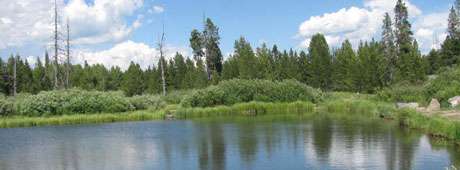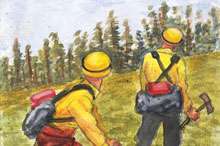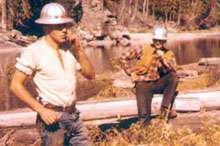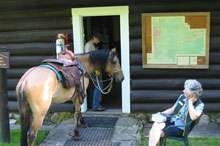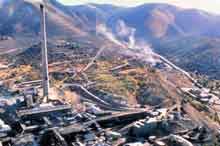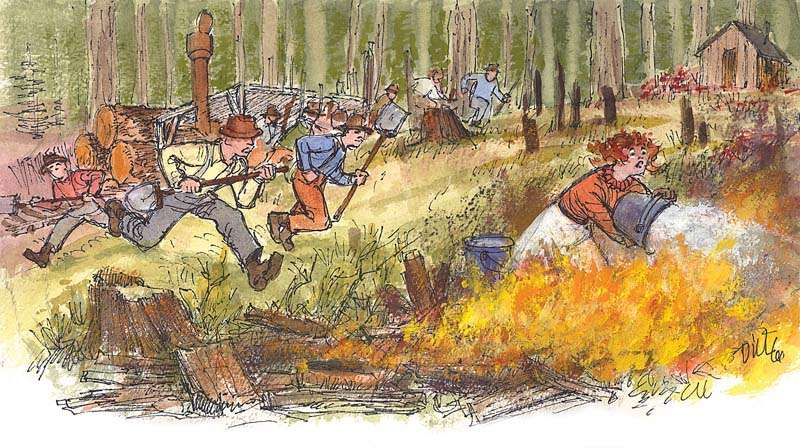No products in the cart.
At Indian Creek
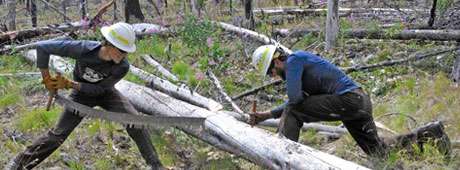
Day seven of pulling a crosscut saw to clear trail in the wilderness presented our final challenge—to cut enough of the seemingly endless deadfall to matter. As we hiked up the trail in the early light, the crew again rallied. With the morning warming, three crosscut saws sang across the forest as sharp teeth bit down into logs, propelled by the cadence of pumping, paired arms. I bumped ahead on the advance team, swinging a Pulaski or ax-adze combination tool, chopping limbs, smacking wood, preparing logs for the saws’ bite.
Rain at lunch break didn’t slow us down. The fresh wet only cooled us before we went back out and hit the trail hard, knocking off logs, jumping ahead for the next downed tree. Late in the afternoon, facing our last hour at work, I pushed out front to chop small stuff and ready big logs. Through a tangle of fallen lodgepole pine, I spotted the welcome sight of another cut log at the other side. We reached our goal of connecting two stretches of cut-out trail in the wilderness.
We’d cut out six miles of trail in a week, sawing and chopping more than a thousand logs in the wide expanse of the wilderness. It felt like a triumph. We hiked back to camp along the undulating trail, looking at our fine finished work, striding fast with a bounce. Satisfaction capped a tough job, and accomplishment overcame exhaustion. A week in the wilderness of Idaho is always an adventure. A week spent reopening an almost-lost trail enhances the challenges and the rewards of being in the wilderness. Continue reading →
This content is available for purchase. Please select from available options.
Register & Purchase Purchase Only
Register & Purchase Purchase Only

